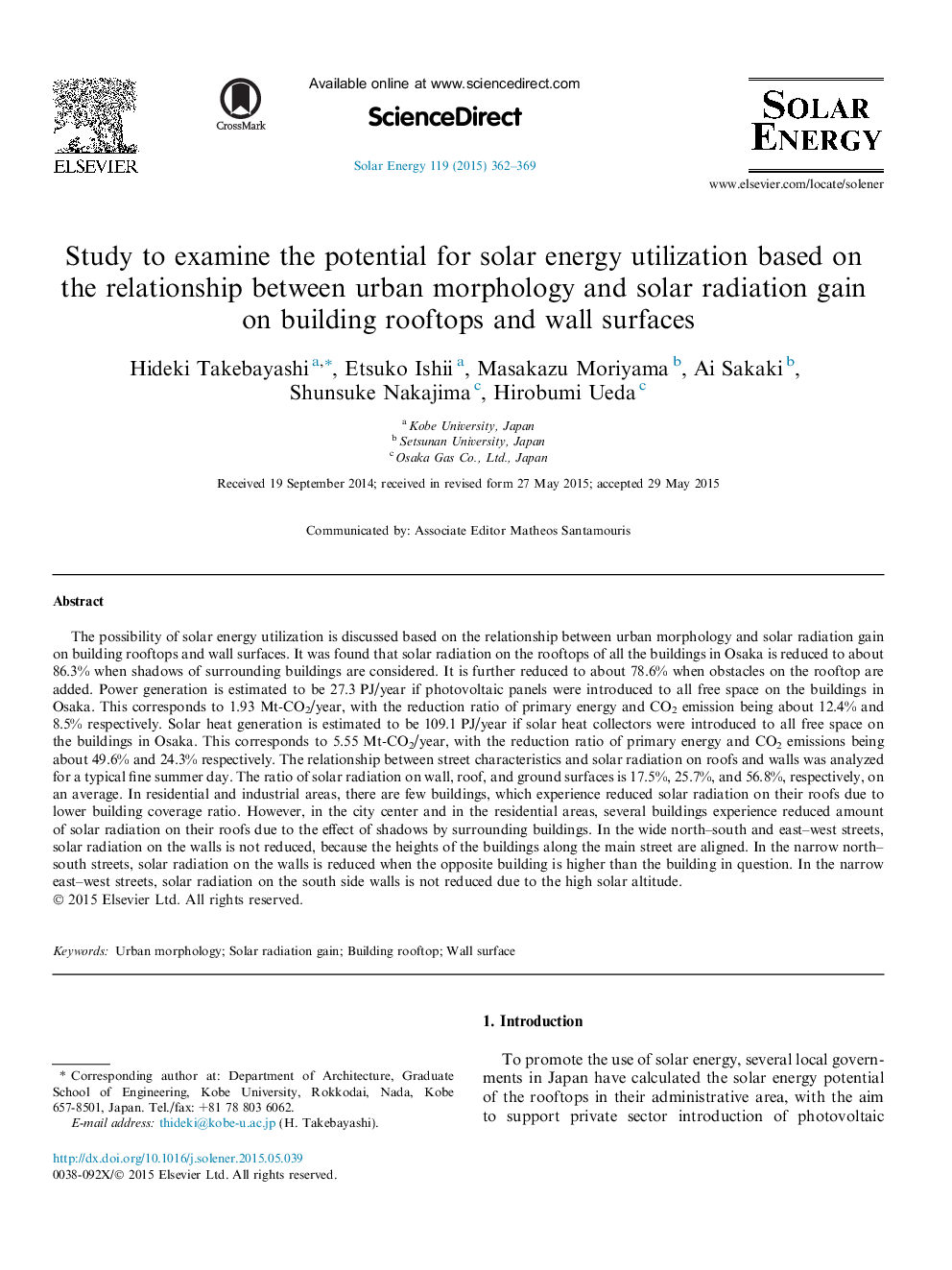| کد مقاله | کد نشریه | سال انتشار | مقاله انگلیسی | نسخه تمام متن |
|---|---|---|---|---|
| 7937646 | 1513099 | 2015 | 8 صفحه PDF | دانلود رایگان |
عنوان انگلیسی مقاله ISI
Study to examine the potential for solar energy utilization based on the relationship between urban morphology and solar radiation gain on building rooftops and wall surfaces
ترجمه فارسی عنوان
مطالعه برای بررسی پتانسیل استفاده از انرژی خورشیدی بر اساس رابطه بین مورفولوژی شهری و افزایش تابش خورشید در ساختمان پشت بام و سطوح دیوار
دانلود مقاله + سفارش ترجمه
دانلود مقاله ISI انگلیسی
رایگان برای ایرانیان
کلمات کلیدی
مورفولوژی شهری، افزایش تابش خورشیدی، پشت بام ساختمان سطح دیوار،
موضوعات مرتبط
مهندسی و علوم پایه
مهندسی انرژی
انرژی های تجدید پذیر، توسعه پایدار و محیط زیست
چکیده انگلیسی
The possibility of solar energy utilization is discussed based on the relationship between urban morphology and solar radiation gain on building rooftops and wall surfaces. It was found that solar radiation on the rooftops of all the buildings in Osaka is reduced to about 86.3% when shadows of surrounding buildings are considered. It is further reduced to about 78.6% when obstacles on the rooftop are added. Power generation is estimated to be 27.3Â PJ/year if photovoltaic panels were introduced to all free space on the buildings in Osaka. This corresponds to 1.93 Mt-CO2/year, with the reduction ratio of primary energy and CO2 emission being about 12.4% and 8.5% respectively. Solar heat generation is estimated to be 109.1Â PJ/year if solar heat collectors were introduced to all free space on the buildings in Osaka. This corresponds to 5.55 Mt-CO2/year, with the reduction ratio of primary energy and CO2 emissions being about 49.6% and 24.3% respectively. The relationship between street characteristics and solar radiation on roofs and walls was analyzed for a typical fine summer day. The ratio of solar radiation on wall, roof, and ground surfaces is 17.5%, 25.7%, and 56.8%, respectively, on an average. In residential and industrial areas, there are few buildings, which experience reduced solar radiation on their roofs due to lower building coverage ratio. However, in the city center and in the residential areas, several buildings experience reduced amount of solar radiation on their roofs due to the effect of shadows by surrounding buildings. In the wide north-south and east-west streets, solar radiation on the walls is not reduced, because the heights of the buildings along the main street are aligned. In the narrow north-south streets, solar radiation on the walls is reduced when the opposite building is higher than the building in question. In the narrow east-west streets, solar radiation on the south side walls is not reduced due to the high solar altitude.
ناشر
Database: Elsevier - ScienceDirect (ساینس دایرکت)
Journal: Solar Energy - Volume 119, September 2015, Pages 362-369
Journal: Solar Energy - Volume 119, September 2015, Pages 362-369
نویسندگان
Hideki Takebayashi, Etsuko Ishii, Masakazu Moriyama, Ai Sakaki, Shunsuke Nakajima, Hirobumi Ueda,
